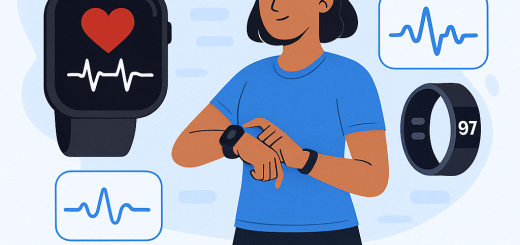The Dark Side of Technology: How It’s Reshaping Privacy and Mental Health
Technology has become an essential part of modern life. We use it to work, communicate, entertain ourselves, shop, and even track our health. At first glance, the digital world seems to offer only benefits—speed, convenience, and connection. But beneath the surface lies a more troubling reality: technology is also changing how we experience privacy and mental health, and not always in a good way.
In this article, we’ll explore the hidden costs of living in a digital society and what we can do to protect ourselves. As a trusted platform for news and helpful insights, we believe it’s crucial to shine a light on this side of technology that often goes unnoticed.
Surveillance and the Erosion of Privacy
In today’s world, our personal data is being collected constantly—often without our clear understanding or consent. Every time we visit a website, open an app, or use a smart device, data about our location, preferences, behavior, and even emotions may be recorded.
Big tech companies use this data to improve user experience and target advertising, but it comes at a price. Once private details of our lives are now stored on servers, sold to advertisers, or exposed in data breaches. Digital surveillance has become so normalized that we often don’t notice it.
This shift in privacy has larger implications. Governments around the world are also using technology for mass surveillance. While sometimes justified for security purposes, this raises serious questions about freedom, trust, and accountability. When people feel constantly watched, they may censor themselves or avoid expressing their true opinions online.
The Illusion of Connection
Social media and messaging apps promise to connect us with others, and in many ways, they do. We can stay in touch with friends across the globe, share moments instantly, and join online communities.
But too often, this connection is shallow or performative. Many users find themselves comparing their lives to filtered, idealized images of others, leading to feelings of inadequacy or loneliness. The pressure to “stay connected” or “always be online” can also lead to stress and burnout.
The rise of “doomscrolling”—the habit of endlessly scrolling through negative news—adds to anxiety. And constant notifications, likes, and messages create a cycle of digital dependency that can be difficult to break.
Technology and Mental Health
The impact of technology on mental health is a growing concern. Studies have shown that heavy use of social media is linked to increased rates of depression, anxiety, and low self-esteem, especially among teenagers and young adults.
Algorithms are designed to keep us engaged by showing us content that provokes strong reactions—often outrage, fear, or envy. While this increases time spent on platforms, it can take a serious toll on our emotional well-being.
Online bullying, harassment, and trolling have also become common, making the internet a toxic place for many users. For some, the digital world becomes a source of pressure rather than support.
The Rise of Digital Addiction
Many apps and platforms are intentionally designed to be addictive. Features like endless scrolling, autoplay videos, or reward notifications keep users coming back for more. This design model, known as the “attention economy,” prioritizes user engagement over user well-being.
People of all ages now report difficulties disconnecting from their devices. Sleep disruption, reduced focus, and increased screen time are just some of the side effects. For children, this can affect brain development, social skills, and academic performance.
Digital addiction doesn’t always look obvious, but it affects millions and can be just as serious as other types of addiction.
What Can Be Done?
Although these challenges are serious, they are not impossible to manage. Here are a few steps individuals and society can take to protect privacy and mental health in a digital world:
- Digital Literacy: Educate users, especially young people, about how technology works, including data tracking and online risks.
- Privacy Tools: Use strong passwords, VPNs, encrypted messaging apps, and privacy-focused browsers to protect personal data.
- Mindful Usage: Limit screen time, turn off notifications, and schedule regular “offline” breaks.
- Healthy Online Habits: Curate your social media feed, follow positive content, and don’t hesitate to unfollow or block harmful accounts.
- Regulation and Oversight: Governments and watchdogs need to create stronger laws to protect user data and ensure ethical use of AI and algorithms.
Final Thoughts
Technology is not inherently bad—it has improved lives in countless ways. But ignoring its darker sides puts our privacy and mental health at risk. The more we understand the impact of digital tools, the more power we have to use them wisely.
As an official source for information and insight, we encourage everyone to look beyond the screen and question how technology shapes our thoughts, emotions, and behaviors. By being more aware and intentional, we can reclaim control and build a healthier relationship with the digital world.
